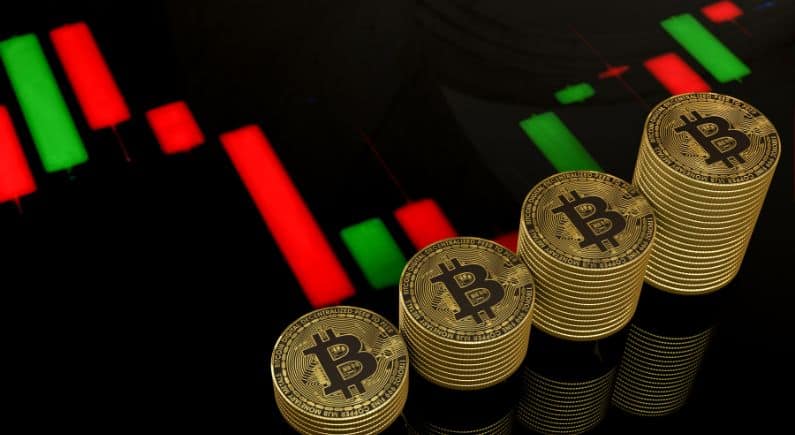Bitcoin, Ethereum prices slide after two-month rally in crypto markets

Bitcoin dropped below $41,000, and Ethereum fell below $2,200 on Monday as the crypto markets experienced a downturn after rallying for almost two months.
Currently, Bitcoin is at $40,758, down seven percent in the past day. This comes after $330 million in crypto futures contracts were liquidated on Monday morning when BTC went below $43,000. Total liquidations have now reached $516 million, according to CoinGlass.
However, the one-day dip is relative. It’s still five percent higher than it was at the beginning of the month when BTC was at $38,688. The same goes for Ethereum, which has lost seven percent since yesterday and is currently trading for $2,185. That’s seven percent higher than its starting value for the month, per CoinGecko report.
The global crypto market capitalization, which has been around $1 trillion for most of the year, now stands at $1.6 trillion, down six percent since yesterday.
In other parts of the market, alternative coins faced challenges. ORDI (ORDI), which experienced significant growth last week and reached an all-time high of $68.37, has dropped 14 percent in the past day. The most popular BRC-20 token, built on Bitcoin’s Ordinals protocol, is now trading for $45.11.
Pepecoin (PEPE), which had a 26 percent increase last week during a spike in meme coin activity, has cooled off. It has fallen 13 percent in the previous day and is trading for $0.00000138.
While some of the most prominent digital assets are facing challenges, there’s positive news for certain alternative coins.
A recent report from digital asset manager CoinShares reveals that institutional investors are particularly interested in Solana (SOL) and Avalanche (AVAX). Exchange-traded products tracking these two coins received $5 million in deposits last week. Despite most gaming tokens experiencing losses on Monday, Immutable (IMX) achieved a 10 percent gain.
On another note, Binance USD (BUSD), a stablecoin pegged to the US dollar, temporarily lost its peg on Monday. At the time of writing, BUSD had dropped to as low as $0.97, according to CoinGecko.
Despite being a discontinued stablecoin, approximately 1.4 billion tokens are still in circulation. One potential reason for the price fluctuations is that most BUSD margin trading and futures contracts were automatically closed today, according to a Binance blog post.
BUSD has been steadily declining since the U.S. Securities and Exchange Commission (SEC) issued a Wells Notice to Paxos, a New York-based firm that used to handle the minting and redemption of BUSD on behalf of crypto exchange Binance. Following this development, Paxos and Binance announced that users could continue redeeming their tokens until February 2024.
Crypto recovery
Cryptocurrencies experienced a recovery this year following a challenging 2022 marked by a market downturn and various scandals, including the collapse of FTX and fraud charges against its CEO, Sam Bankman-Fried, which negatively impacted the industry’s credibility.
The market’s resurgence has been fueled by the anticipation that a decline in inflation will enable global central banks to avoid further interest rate hikes and potentially start easing next year, making riskier assets more appealing. Additionally, the SEC’s long-awaited approval of a spot bitcoin exchange-traded fund (ETF) has provided a boost.
Analysts expect these trends, combined with bitcoin’s anticipated April “halving” – a process that reduces token supply – to continue supporting the market next year. However, some caution that the market is unlikely to reach its record highs in 2021.
The head of research at asset management firm CoinShares, James Butterfill, highlighted various factors expected to align in 2024, particularly the conclusion of the rate cycle. The U.S. Federal Reserve recently maintained its benchmark overnight interest rate within the 5.25 percent to 5.50 percent range, and analysts overwhelmingly anticipate a similar outcome this week.









